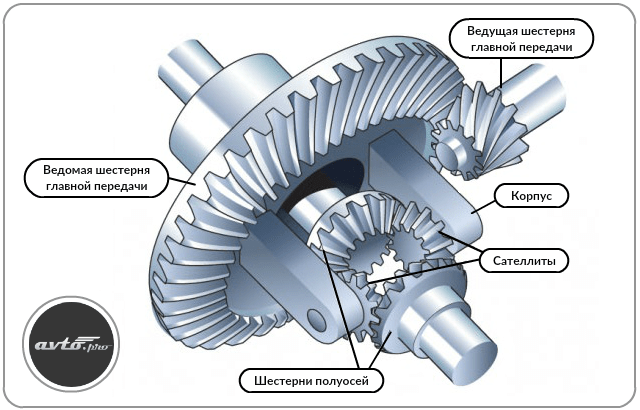
Differential - design, damage and repair. Learn what a differential is
Content
- What is a differential?
- Differential - design and operation. What is a differential and how does it prevent skidding?
- What are the most common signs of differential damage?
- What is the repair of the differential system of a passenger car?
- Can I repair the differential in my car myself?
- Proper vehicle traction due to differential operation
What is a differential?
A technological solution, commonly referred to as a "differential", provides proper traction for vehicles for various purposes, i.e. cars, trucks and vans. You will also find them in many other machines. The essence of the differential is to ensure safe and accurate cornering. This is due to the fact that on the driven axle, the outer wheel has to cover a greater distance than the inner one. As a result, in order to ensure traction stability and avoid skidding, it is necessary to compensate for the difference between tire speeds in order to ensure proper movement and traction.
Differential - design and operation. What is a differential and how does it prevent skidding?
Traditional differential design is based on many complex elements. A gear wheel is attached to the housing, driven by the input shaft gear. In this way, the torque generated by the car's engine is transmitted. There are also wheeled moving parts inside as well as specially designed splined drive shafts. All components that make up the differential are perfectly matched and further adjusted before commissioning.
If you want to understand how a differential works, imagine the tracks left by the two wheels on the front axle of a car during a turn. A car with a differential will leave stripes of varying lengths. You probably guessed that one tire will cover less distance, so it will spin at a slower rotational speed. We owe this system, and this is the simplest answer to the question: what is a differential. Differential prevents slippage and drive failures car excessive fuel consumption and excessive tire wear.
What are the most common signs of differential damage?
An audible knock from under the bottom is one of the most common symptoms of differential damage you may experience. Another common symptom of a bad differential is steering wheel vibration. They are often confused with gearbox or steering axle roughness. Drivers also often report knocking when cornering, regardless of the vehicle's direction of travel. The cause of damage can also be a sudden and rapid start from a place.
Squeaks, knocks and metallic sounds coming from under the bottom when the car is moving should definitely make you contact the nearest car service.
Can you drive a car with a damaged differential?
Remember that a damaged differential system is a serious obstacle that often makes it impossible to continue on the road. The consequence of operating a vehicle with a defective compensation mechanism is increased fuel consumption and faster tire wear. Roughness also contributes to reduced driving comfort.
What is the repair of the differential system of a passenger car?
Due to the high degree of complexity, the repair of the emergency differential of a passenger car should be carried out by a qualified mechanic with extensive experience. Its regeneration consists in the replacement of damaged elements and the proper maintenance of all the mechanisms from which it was built. Remember that the number of different types of gears, transmission axles or planetary gears makes this system very susceptible to failure. Therefore, it is necessary to pay attention to any symptoms that may indicate damage to it.
Can I repair the differential in my car myself?
Theoretically, you can repair the differential yourself on your own car. In practice, if you are not an experienced car mechanic, you should not undertake this operation. Attempting to repair a minor malfunction by an unqualified person may result in irreparable damage to the vehicle's differential. We recommend that you limit yourself to regular inspection of the correct operation of the mechanism and checking for lubricating oil leaks or unusual knocks coming from it.
Proper vehicle traction due to differential operation
The differential system used in passenger cars is the basic system that ensures proper traction of the car on the road. The complex design and forces acting on it mean that the temperature inside it, when properly used, can reach 65 degrees Celsius.oC. It is subject to high operating loads, so you should remember to regularly service it in professional car services. If you notice a leak or hear a knock while driving, you should definitely contact the diagnostician. A sign of damage to the differential can also be vibrations transmitted to the steering wheel. This phenomenon can be especially felt when performing turns and turning maneuvers. Also remember to change the gear oil regularly according to the vehicle manufacturer's recommendations.
A properly functioning differential will provide you with superior driving comfort. Take care of its good condition and regular maintenance, because the cost of repairs in the event of a breakdown can even reach several thousand zlotys. Self-regeneration of the differential system is usually not possible and requires the use of a professional service technician.